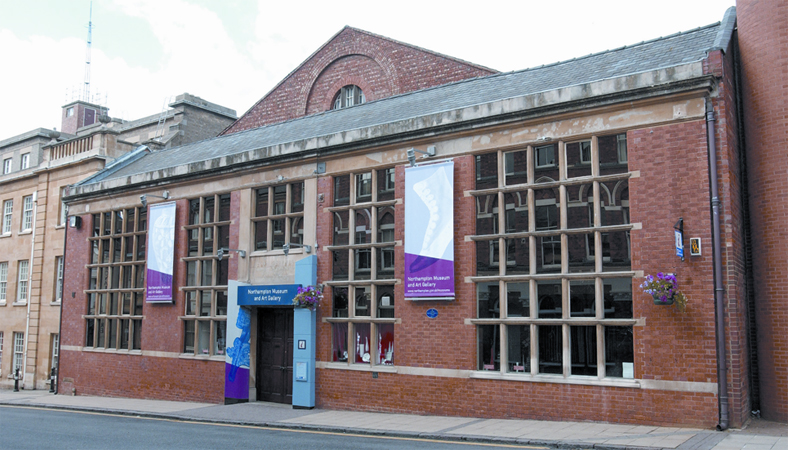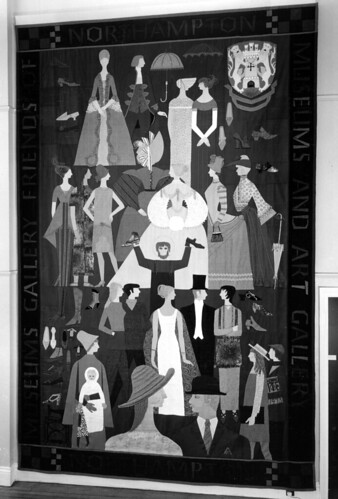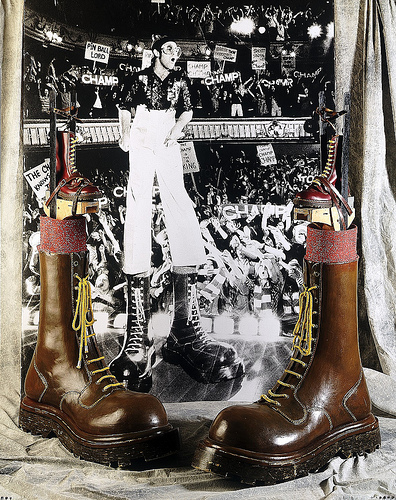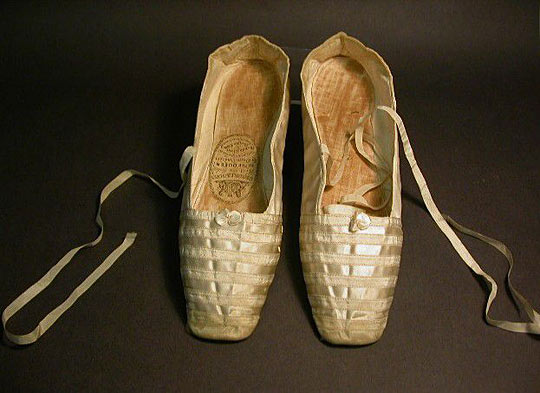Presented here is a brief introduction to the history of shoe fashion, provided by Rebecca Shawcross, an excerpt from her book Shoes: An Illustrated History (2014).
Along with authoring this in-depth history Rebecca is also the Senior Shoe Curator at Northampton Museum and Art Gallery

The precise origins of footwear are unknown. However, through discoveries of preserved footwear and ancient pictorial representations, we know that footwear has existed since prehistoric times. At eight thousand years old the sandal made from fibrous materials found in the 1950s in the Arnold Research Cave, located in central Missouri in the United States is currently the oldest. The oldest leather shoe was discovered in a cave in Armenia in 2010. Very similar to a moccasin, it is a mere three thousand and five hundred years old.
In ancient Egypt it appears that all levels of society wore sandals made from woven papyrus. The Romans produced a variety of footwear often worn according to one’s position in society, including the caliga, a flat soled hobnail sandal, which exposed the toes, the calceus with a closed toe, and the gallica, also with a closed toe, which better suited our climate.

Medieval shoes reflected the fashions of the day. The poulaine sported a toe that could reach a length of up to 180mm. The wide-toed footbag made popular during the reign of King Henry VIII had soles more than 165mm wide and the towering Venetian chopine, an early platform shoe, could reach up to 450mm in height.
By the end of Queen Elizabeth I’s reign, heels appeared on both men and women’s shoes. This made it difficult to make shoes as left and rights, so shoemakers started to make shoes as straights. These were the same and only wearing them moulded them in to a left or right.
The other new introduction in 1660 was the buckle to fasten the shoe. Removable like any other piece of jewellery, it became bigger and more ostentatious. It was around until 1791 in the UK, though the French Revolution had abolished them earlier in France.
By the end of the 1790s women’s shoes become simpler, the heel lowers and decorative details include a tiny rosette, ruching or bow trim, until it requires ribbons to tie around the ankle to keep it on. The heel gradually disappears producing a flat soled square toed slip on shoe.

Boots are popular from 1790s including for men the Hessian with tassel at the top front, the knee-high leather Wellington seen from 1817 and the Blucher. By the 1840s ankle boots became popular for both men and women, styles included side-lace, elastic-side boots, button boots and Balmorals.
By the 1870s three classic and enduring styles emerged. Men wore the open front Derby or closed front Oxford and for women, a heel is added to the flat shoe of the 1830s so becoming the popular court shoe.
As hemlines rose in the 1920s the bar shoe became popular – often with a jewelled heel. The 1950s gave us the stiletto heel – a moulded plastic heel with a steel pin running through it. This made a high slender heel possible for the first time. The emergence of teen culture in the late 50s and 60s saw shoes reflect post-war freedom and youth.
The platform shoe symbolised the early 1970s. By the 1980s the trainer had become the new must-have accessory. The 1990s saw the rise of the celebrity shoe designer. Today, shoes reflect the influence of all the eras and designs that have gone before.
For further reading see Shoes: An Illustrated History by Rebecca Shawcross Published by Bloomsbury, 2014.


